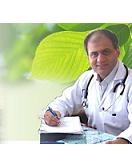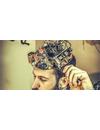Abstract
Clogged hair follicles beneath the skin's surface are the source of acne, a common skin condition. Lesions, commonly referred to as zits or pimples, develop when pores become clogged with sebum, an oil that keeps skin from drying out. Breakouts can develop in the shoulders, back, or chest, although they most commonly happen on the face.
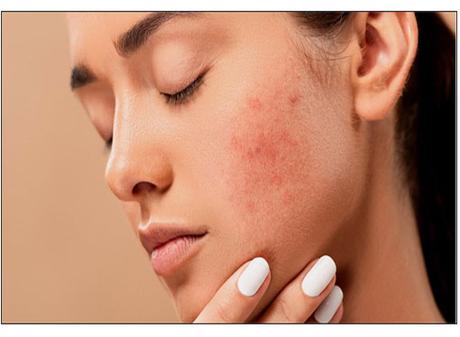
Introduction
Acne is a skin disorder characterised by inflammation of the sebaceous (oil) glands that link to the hair follicles that house the fine hairs. In healthy skin, the pore, a follicular opening, allows sebum secreted by the sebaceous glands to escape onto the skin's surface. Skin cells that line the follicle are called keratinocytes. Keratinocytes often move to the skin's surface as the body sheds skin cells. When a person has acne, sebum, hair, and keratinocytes stick together inside the pore. This prevents keratinocytes from shedding and prevents sebum from rising to the skin's surface. When a person has acne, sebum, hair, and keratinocytes stick together inside the pore. In addition to preventing keratinocyte shedding, this prevents sebum from rising to the skin's surface. Bacteria that normally live on the skin's surface can multiply in clogged follicles when oil and cells mix to cause inflammation, which manifests as swelling, redness, heat, and pain. Germs, skin cells, and sebum cause lesions or pimples because they burst the wall of the clogged follicle and spill sebum into the surrounding skin.
Most people discover that by the time they are in their thirties, their acne has cleared up, but some continue to struggle with the skin issue well into their forties and fifties.
Types Of Acne
Numerous kinds of lesions, or pimples, are caused by acne. Swollen or blocked hair follicles are known medically as comedones. Types of acne consist of
Whiteheads: A white bump that remains under the skin and is brought on by clogged hair follicles.
Plugged follicles that break open once they reach the skin's surface are known as blackheads. Rather than being dirty, the reason they seem black on the skin's surface is because the sebum is discoloured by the air.
Papules: Inflamed lesions that can be sensitive to the touch and typically manifest as little, pink pimples on the skin.
Pustules, sometimes called pimples, are papules topped with lesions filled with white or yellow pus that may have a red base.
Nodules: Massive, excruciating solid lesions buried deep under the skin.
Severe nodular acne, often known as cystic acne: Deep, excruciating pus.
Causes
- Excessive or uncontrollable high pore oil production.
- The dead skin cells collect inside the pore .
- The proliferation of germs inside the pore.
Any of the following conditions may increase your risk of developing acne
- Proliferative/Reproductive.
- Those with acne may overproduce androgens, or male sex hormones. Puberty usually causes both boys and girls to grow, which in turn causes the sebaceous glands to develop and produce more sebum.
- Acne may also be brought on by pregnancy-related hormonal changes.
- Family history in the past. Research suggests that having acne-prone parents may increase your risk of developing acne.
- Druggists. Lithium, corticosteroids, and hormones are a few medications that may contribute to acne .
- Element of age. Acne is more common in teenagers than in people of any age.
Symptoms Of Acne
While acne can occur almost anywhere on the body, breakouts are most commonly observed on the
- Face, neck, back, shoulders, and chest.
- Your skin may feel uneven and scratchy after getting pimples.
Along with acne, you could also have
- Hyperpigmentation, or dark patches or spots on the skin, along with redness, swelling, and inflammation, as well as discomfort and tenderness whether or not touched.
- Additionally, scarring or discolouration of the skin can result from acne breakouts.
- Despite how tempting it may be to pop a pimple right away, you should avoid doing so and instead try these strategies to reduce the likelihood of scarring. It can take a few days to many weeks for a pimple to fully go away after it starts. The duration of an acne eruption can vary greatly.
Triggers Of Acne
- Oily cosmetics
- Environment factors like pollution, dust, increased humidity
- Consuming foods high in sugar
- Consuming dairy products, high protein food
- Hormonal changes
- Mensuration
- Stress
- Use of medication that contains androgen
- Touching or squeezing pimples
- Washing your face more often
- Using wet towels on the face
Diagnosis
- Physical examination
Ayurvedic Overview
According to Ayurveda, acne is correlated with Yuvan Pidika and Tarunya Pitika. It is classified under Kshudra Rogas (minor health ailments). The terms Yuvanpidika and Tarunyapitika are so-called called because it manifests in Yuva or Taruna avastha (adolescence). This condition is also called Mukhadushika because it causes inflammatory lesions and vrana vastu (scars) on the skin. Due to mithya ahaar and vihar (improper diet and lifestyle), there is the production of ama (toxins) in the body. These toxins circulate in the body and cause the vitiation of Kapha and Vata dosha. Rakta dhatu (blood tissue) is also involved in its pathogenesis. These all factors result in the overproduction of sebum due to abnormality in the lomakoop (pilosebaceous unit). Symptoms of different types of acne are manifested according to the dominance of dosha. In Vata-predominant acne there is the presence of pain and scarring whereas in Pitta-predominant acne there is increased redness, inflammation and burning sensation. In Kapha-predominant acne, there are itchy, pus-filled bumps with discharge. Aggravated Vata and Blood are responsible for hyperpigmentation of the skin. According to Acharya Charak, acne is due to the aggravation of Pitta dosha.
Treatment
Ayurvedic management of acne involves the pacification of Doshas that causes Acne. Nidana Parivarjan, Shodhan Chikitsa and Shaman Chikitsa are done in order to manage Acne.
Nidana Parivarjan (Avoiding causes and triggers) : In order to avoid acne one should avoid all the causes and triggers associated with acne.
Shodhan Chikitsa (Bio-cleansing therapy)
- Swedana (Sudation)
- Udvartana (Rubbing herbal powder and lepa on skin )
- Abhyanga (Whole body massage)
- Vaman (Emesis)
- Virechan (Purgation)
Shaman Chikitsa (Pacifying therapy) : Shaman Chikitsa for acne is done by using herbs that pacify all three doshas in our body.
Herbs that are having antibacterial, anti-inflammatory, and blood- purifying properties are used for the management of acne.
A Few Herbs That Can Be Used For Acne Management Are Given Below
- Lodhra (Symplocos racemosa)
- Manjishtha (Rubia cordifolia)
- Nimba (Azadirachta indica)
- Khadira (Acacia catechu)
- Yashtimadhu (Glycyrrhiza glabra)
- Guduchi (Tinospora cordifolia)
Various Herbal Formulations That Can Be Used For The Management Of Acne Are Given Below
- Vati/Churna
- Guduchyadi Vati
- Amalaki churna
- Gandhak rasayan
- Khadiradi vati
Oils
- Kumkumadi tailam
- Haridradi tailam
- Manjisthadi tailam
Lepa
- Shalmalyadi lepa
- Manjishtadi lepa
- Varunadi lepa
- Lodhradi lepa
- Nimbadi lepa
- Arjunadi lepa
Herbal Remedies For Acne By Planet Ayurveda
Planet Ayurveda provides amazing herbal remedies for the effective management of acne. The products are formulated under GMP guidelines. Planet Ayurveda products contain 100% pure herbs. These herbal medicines are free from any additives, chemicals and preservatives. These products are safe for use. Planet Ayurveda offers the following herbal formulations in Acne Care Pack given below
- Gandhak Rasayan
- Dermo Plan Syrup
- De-Grease face wash
- Anti-ageing face serum
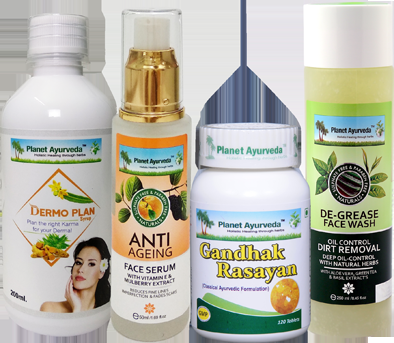

Product Description
1. Gandhak Rasayan
Gandhak Rasayan is a herbal formulation that contains Shuddha Gandhak (Purified sulphur). Gandhak Rasayan is purified sulphur which is prepared by purification of Gandhak multiple times with clarified butter or ghee and then it is further processed with cow's milk and blended with potent herbal juices and decoctions. All three doshas-Pitta, Kapha, and Vata-are balanced. It is a great anti-aging medicine and also improves skin complexion and immunity. It is commonly used to manage disorders like acne, urticaria, scabies, and bleeding disorders.
Dosage : Take 1-2 tablets with lukewarm water twice or three times a day.
2. Dermo Plan Syrup
Dermo Plan syrup is a polyherbal formulation that contains Manjishtha (Rubia cordifolia) , Giloy (Tinospora cordifolia) , Chopchini (Smilax china) , Sariva (Hemidesmus indicus) , Neem (Azadirachta indica) , Khadir (Areca catechu) , and various other formulations. This syrup contains Manjistha which is bitter, astringent and sweet in taste. It is cold in potency and has the tendency to pacify Pitta. It is a potent blood purifier. Acharya Charaka called it Varnya (herb that improves complexion). Giloy is Astringent and Bitter in taste. It balances all three doshas. It is vyavasthapak (anti-aging) and is useful for skin diseases. Dermo Plan Syrup is specially formulated for skin problems like acne, urticaria, rashes, etc. It is anti-aging, improves complexion, is rich in antioxidants and therefore helps in reducing the impact of free radicals on the skin. It reduces the inflammation and hyperpigmentation seen in acne.
Dosage : 1-2 teaspoons twice a day.
3. De-Grease face wash
De-Grease face wash is a wonderful formulation that contains Aloe vera extract (Aloe barbadensis), Green tea extract (Camellia sinensis) , Basil extract (Ocimum basillicum) , Glycerin and various other herbs. This face wash contains Aloe vera which is cold in potency. It balances all three doshas. It is a potent rejuvenator and is exclusively used for skin problems. Green tea present in De-Grease face wash contains a natural substance that helps in reducing inflammation on the skin. It has anti-inflammatory, anti-androgenic, and antibacterial properties. The De-Grease face wash also contains Basil which is rich in rosmarinic acid that helps in reducing acne.
Method of application : Squeeze a small amount of De-Grease face wash on a wet palm and apply on the face, work up a lather and gently massage in with fingertips. Rinse off and pat dry gently.
4. Anti-ageing Face Serum
Argan oil, vitamin E, mulberry extract, orange peel extract, and a variety of other herbs are included in this herbal anti-ageing face serum. As everyone knows, oranges are an excellent source of vitamin C. It has anti-aging qualities, reduces pigmentation, and is linked to acne. Mulberry, which is high in antioxidants and has anti-aging qualities, is another ingredient in this Anti-ageing face serum. It lessens skin damage and helps to diminish the scars left by pimples. Argan oil is moisturizing and helps to lessen skin inflammation. This serum promotes the synthesis of collagen while assisting in the reduction of acne, wrinkles, age spots, scars, and sun damage.
Application Method : After cleansing, apply this serum on your face and neck every day before using any other makeup. can be used as an all-over facial treatment or applied to specific target regions, such as the area around the lips or eyes. As part of a good skin care routine, using a face serum every day is advised.
Contact Planet Ayurveda Support Team to provide you the costing/ordering and delivery information at - [email protected] or Call at 0172-521-4040 (India), +91-172-521-4040 (Outside India) or Whatsapp at (+91) 842-749-4030.Conclusion
Because of the overactivity of sebaceous glands, acne is an inflammatory skin disorder that causes inflammation of the pores. Environmental factors, consuming dairy products, foods high in sugar, and hormonal changes are the factors that can trigger Acne. In Ayurveda, Nidana Parivarjan, Shodhan Chikitsa and Shaman Chikitsa are done in order to manage acne. Lodhra, Manjishtha, Nimba, and Khadira are a few herbs that can be used to manage this condition and it is preferred not to touch or squeeze acne bumps as it can cause damage to the skin resulting in scarring of the skin which can remain for a lifetime.
DR. Vikram Chauhan, MD - AYURVEDA is an expert ayurvedic doctor based in Chandigarh, India and doing his practice in Mohali, India. He is spreading the knowledge of Ayurveda - Ancient healing treatment, not only in India but also abroad. He is the CEO and Founder of Planet Ayurveda Products, Planet Ayurveda Clinic and Krishna Herbal Company. Write at - [email protected], Contact at - +91-172-521-4030 Websites - www.planetayurveda.com, www.alwaysayurveda.com
View more posts from this authorAbstract
Clogged hair follicles beneath the skin's surface are the source of acne, a common skin condition. Lesions, commonly referred to as zits or pimples, develop when pores become clogged with sebum, an oil that keeps skin from drying out. Breakouts can develop in the shoulders, back, or chest, although they most commonly happen on the face.
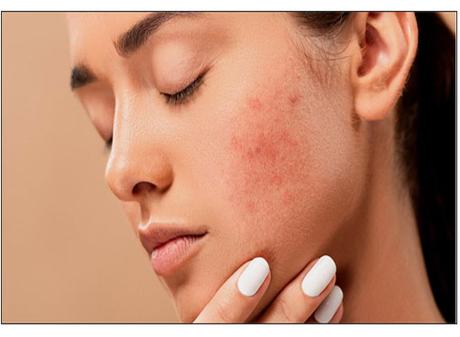
Introduction
Acne is a skin disorder characterised by inflammation of the sebaceous (oil) glands that link to the hair follicles that house the fine hairs. In healthy skin, the pore, a follicular opening, allows sebum secreted by the sebaceous glands to escape onto the skin's surface. Skin cells that line the follicle are called keratinocytes. Keratinocytes often move to the skin's surface as the body sheds skin cells. When a person has acne, sebum, hair, and keratinocytes stick together inside the pore. This prevents keratinocytes from shedding and prevents sebum from rising to the skin's surface. When a person has acne, sebum, hair, and keratinocytes stick together inside the pore. In addition to preventing keratinocyte shedding, this prevents sebum from rising to the skin's surface. Bacteria that normally live on the skin's surface can multiply in clogged follicles when oil and cells mix to cause inflammation, which manifests as swelling, redness, heat, and pain. Germs, skin cells, and sebum cause lesions or pimples because they burst the wall of the clogged follicle and spill sebum into the surrounding skin.
Most people discover that by the time they are in their thirties, their acne has cleared up, but some continue to struggle with the skin issue well into their forties and fifties.
Types Of Acne
Numerous kinds of lesions, or pimples, are caused by acne. Swollen or blocked hair follicles are known medically as comedones. Types of acne consist of
Whiteheads: A white bump that remains under the skin and is brought on by clogged hair follicles.
Plugged follicles that break open once they reach the skin's surface are known as blackheads. Rather than being dirty, the reason they seem black on the skin's surface is because the sebum is discoloured by the air.
Papules: Inflamed lesions that can be sensitive to the touch and typically manifest as little, pink pimples on the skin.
Pustules, sometimes called pimples, are papules topped with lesions filled with white or yellow pus that may have a red base.
Nodules: Massive, excruciating solid lesions buried deep under the skin.
Severe nodular acne, often known as cystic acne: Deep, excruciating pus.
Causes
- Excessive or uncontrollable high pore oil production.
- The dead skin cells collect inside the pore .
- The proliferation of germs inside the pore.
Any of the following conditions may increase your risk of developing acne
- Proliferative/Reproductive.
- Those with acne may overproduce androgens, or male sex hormones. Puberty usually causes both boys and girls to grow, which in turn causes the sebaceous glands to develop and produce more sebum.
- Acne may also be brought on by pregnancy-related hormonal changes.
- Family history in the past. Research suggests that having acne-prone parents may increase your risk of developing acne.
- Druggists. Lithium, corticosteroids, and hormones are a few medications that may contribute to acne .
- Element of age. Acne is more common in teenagers than in people of any age.
Symptoms Of Acne
While acne can occur almost anywhere on the body, breakouts are most commonly observed on the
- Face, neck, back, shoulders, and chest.
- Your skin may feel uneven and scratchy after getting pimples.
Along with acne, you could also have
- Hyperpigmentation, or dark patches or spots on the skin, along with redness, swelling, and inflammation, as well as discomfort and tenderness whether or not touched.
- Additionally, scarring or discolouration of the skin can result from acne breakouts.
- Despite how tempting it may be to pop a pimple right away, you should avoid doing so and instead try these strategies to reduce the likelihood of scarring. It can take a few days to many weeks for a pimple to fully go away after it starts. The duration of an acne eruption can vary greatly.
Triggers Of Acne
- Oily cosmetics
- Environment factors like pollution, dust, increased humidity
- Consuming foods high in sugar
- Consuming dairy products, high protein food
- Hormonal changes
- Mensuration
- Stress
- Use of medication that contains androgen
- Touching or squeezing pimples
- Washing your face more often
- Using wet towels on the face
Diagnosis
- Physical examination
Ayurvedic Overview
According to Ayurveda, acne is correlated with Yuvan Pidika and Tarunya Pitika. It is classified under Kshudra Rogas (minor health ailments). The terms Yuvanpidika and Tarunyapitika are so-called called because it manifests in Yuva or Taruna avastha (adolescence). This condition is also called Mukhadushika because it causes inflammatory lesions and vrana vastu (scars) on the skin. Due to mithya ahaar and vihar (improper diet and lifestyle), there is the production of ama (toxins) in the body. These toxins circulate in the body and cause the vitiation of Kapha and Vata dosha. Rakta dhatu (blood tissue) is also involved in its pathogenesis. These all factors result in the overproduction of sebum due to abnormality in the lomakoop (pilosebaceous unit). Symptoms of different types of acne are manifested according to the dominance of dosha. In Vata-predominant acne there is the presence of pain and scarring whereas in Pitta-predominant acne there is increased redness, inflammation and burning sensation. In Kapha-predominant acne, there are itchy, pus-filled bumps with discharge. Aggravated Vata and Blood are responsible for hyperpigmentation of the skin. According to Acharya Charak, acne is due to the aggravation of Pitta dosha.
Treatment
Ayurvedic management of acne involves the pacification of Doshas that causes Acne. Nidana Parivarjan, Shodhan Chikitsa and Shaman Chikitsa are done in order to manage Acne.
Nidana Parivarjan (Avoiding causes and triggers) : In order to avoid acne one should avoid all the causes and triggers associated with acne.
Shodhan Chikitsa (Bio-cleansing therapy)
- Swedana (Sudation)
- Udvartana (Rubbing herbal powder and lepa on skin )
- Abhyanga (Whole body massage)
- Vaman (Emesis)
- Virechan (Purgation)
Shaman Chikitsa (Pacifying therapy) : Shaman Chikitsa for acne is done by using herbs that pacify all three doshas in our body.
Herbs that are having antibacterial, anti-inflammatory, and blood- purifying properties are used for the management of acne.
A Few Herbs That Can Be Used For Acne Management Are Given Below
- Lodhra (Symplocos racemosa)
- Manjishtha (Rubia cordifolia)
- Nimba (Azadirachta indica)
- Khadira (Acacia catechu)
- Yashtimadhu (Glycyrrhiza glabra)
- Guduchi (Tinospora cordifolia)
Various Herbal Formulations That Can Be Used For The Management Of Acne Are Given Below
- Vati/Churna
- Guduchyadi Vati
- Amalaki churna
- Gandhak rasayan
- Khadiradi vati
Oils
- Kumkumadi tailam
- Haridradi tailam
- Manjisthadi tailam
Lepa
- Shalmalyadi lepa
- Manjishtadi lepa
- Varunadi lepa
- Lodhradi lepa
- Nimbadi lepa
- Arjunadi lepa
Herbal Remedies For Acne By Planet Ayurveda
Planet Ayurveda provides amazing herbal remedies for the effective management of acne. The products are formulated under GMP guidelines. Planet Ayurveda products contain 100% pure herbs. These herbal medicines are free from any additives, chemicals and preservatives. These products are safe for use. Planet Ayurveda offers the following herbal formulations in Acne Care Pack given below
- Gandhak Rasayan
- Dermo Plan Syrup
- De-Grease face wash
- Anti-ageing face serum
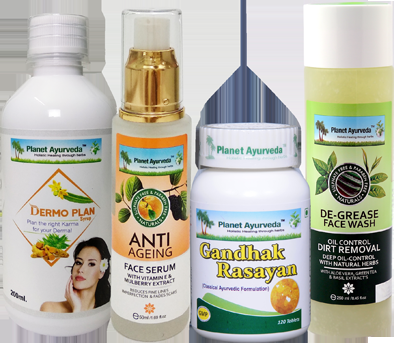

Product Description
1. Gandhak Rasayan
Gandhak Rasayan is a herbal formulation that contains Shuddha Gandhak (Purified sulphur). Gandhak Rasayan is purified sulphur which is prepared by purification of Gandhak multiple times with clarified butter or ghee and then it is further processed with cow's milk and blended with potent herbal juices and decoctions. All three doshas-Pitta, Kapha, and Vata-are balanced. It is a great anti-aging medicine and also improves skin complexion and immunity. It is commonly used to manage disorders like acne, urticaria, scabies, and bleeding disorders.
Dosage : Take 1-2 tablets with lukewarm water twice or three times a day.
2. Dermo Plan Syrup
Dermo Plan syrup is a polyherbal formulation that contains Manjishtha (Rubia cordifolia) , Giloy (Tinospora cordifolia) , Chopchini (Smilax china) , Sariva (Hemidesmus indicus) , Neem (Azadirachta indica) , Khadir (Areca catechu) , and various other formulations. This syrup contains Manjistha which is bitter, astringent and sweet in taste. It is cold in potency and has the tendency to pacify Pitta. It is a potent blood purifier. Acharya Charaka called it Varnya (herb that improves complexion). Giloy is Astringent and Bitter in taste. It balances all three doshas. It is vyavasthapak (anti-aging) and is useful for skin diseases. Dermo Plan Syrup is specially formulated for skin problems like acne, urticaria, rashes, etc. It is anti-aging, improves complexion, is rich in antioxidants and therefore helps in reducing the impact of free radicals on the skin. It reduces the inflammation and hyperpigmentation seen in acne.
Dosage : 1-2 teaspoons twice a day.
3. De-Grease face wash
De-Grease face wash is a wonderful formulation that contains Aloe vera extract (Aloe barbadensis), Green tea extract (Camellia sinensis) , Basil extract (Ocimum basillicum) , Glycerin and various other herbs. This face wash contains Aloe vera which is cold in potency. It balances all three doshas. It is a potent rejuvenator and is exclusively used for skin problems. Green tea present in De-Grease face wash contains a natural substance that helps in reducing inflammation on the skin. It has anti-inflammatory, anti-androgenic, and antibacterial properties. The De-Grease face wash also contains Basil which is rich in rosmarinic acid that helps in reducing acne.
Method of application : Squeeze a small amount of De-Grease face wash on a wet palm and apply on the face, work up a lather and gently massage in with fingertips. Rinse off and pat dry gently.
4. Anti-ageing Face Serum
Argan oil, vitamin E, mulberry extract, orange peel extract, and a variety of other herbs are included in this herbal anti-ageing face serum. As everyone knows, oranges are an excellent source of vitamin C. It has anti-aging qualities, reduces pigmentation, and is linked to acne. Mulberry, which is high in antioxidants and has anti-aging qualities, is another ingredient in this Anti-ageing face serum. It lessens skin damage and helps to diminish the scars left by pimples. Argan oil is moisturizing and helps to lessen skin inflammation. This serum promotes the synthesis of collagen while assisting in the reduction of acne, wrinkles, age spots, scars, and sun damage.
Application Method : After cleansing, apply this serum on your face and neck every day before using any other makeup. can be used as an all-over facial treatment or applied to specific target regions, such as the area around the lips or eyes. As part of a good skin care routine, using a face serum every day is advised.
Contact Planet Ayurveda Support Team to provide you the costing/ordering and delivery information at - [email protected] or Call at 0172-521-4040 (India), +91-172-521-4040 (Outside India) or Whatsapp at (+91) 842-749-4030.Conclusion
Because of the overactivity of sebaceous glands, acne is an inflammatory skin disorder that causes inflammation of the pores. Environmental factors, consuming dairy products, foods high in sugar, and hormonal changes are the factors that can trigger Acne. In Ayurveda, Nidana Parivarjan, Shodhan Chikitsa and Shaman Chikitsa are done in order to manage acne. Lodhra, Manjishtha, Nimba, and Khadira are a few herbs that can be used to manage this condition and it is preferred not to touch or squeeze acne bumps as it can cause damage to the skin resulting in scarring of the skin which can remain for a lifetime.
